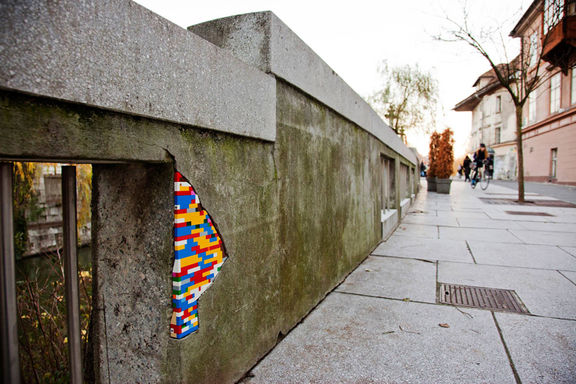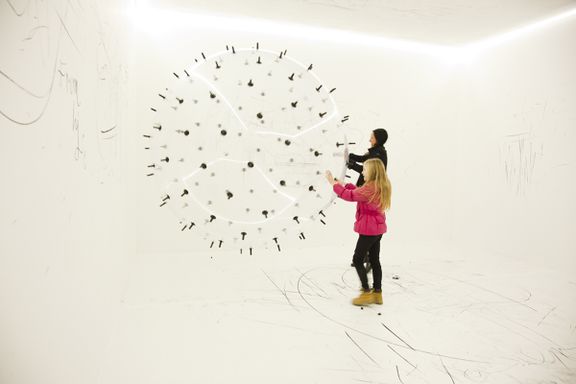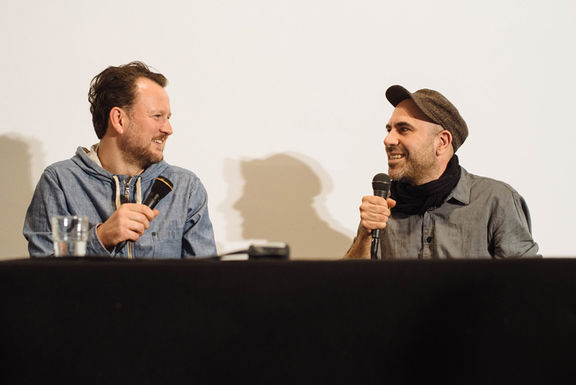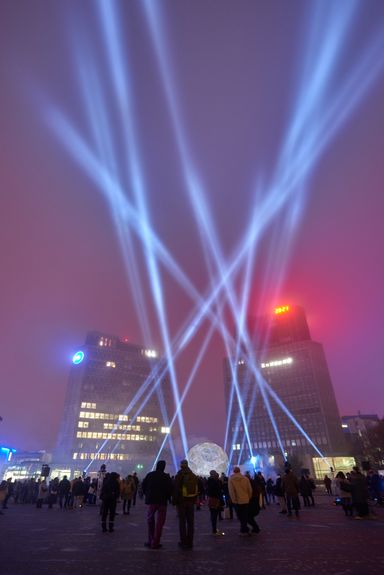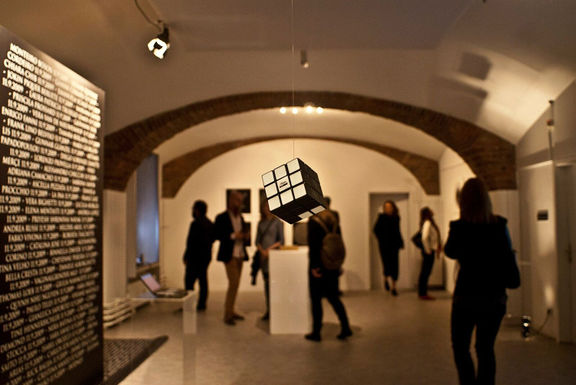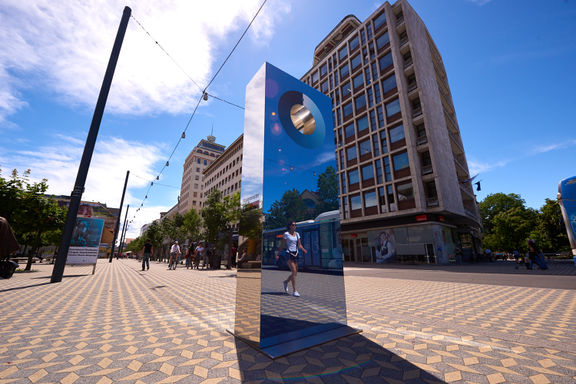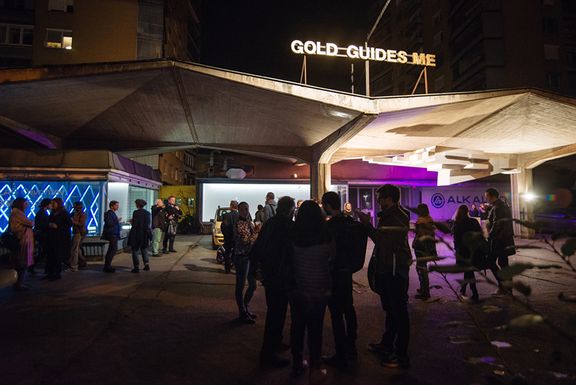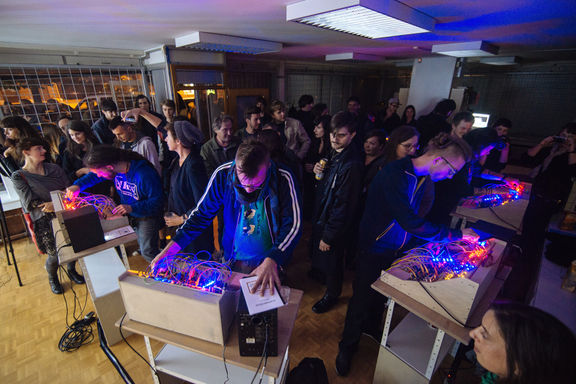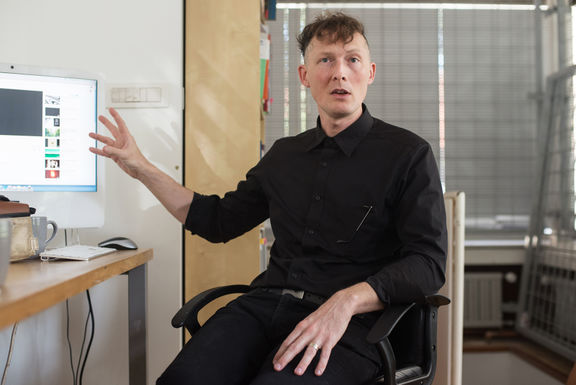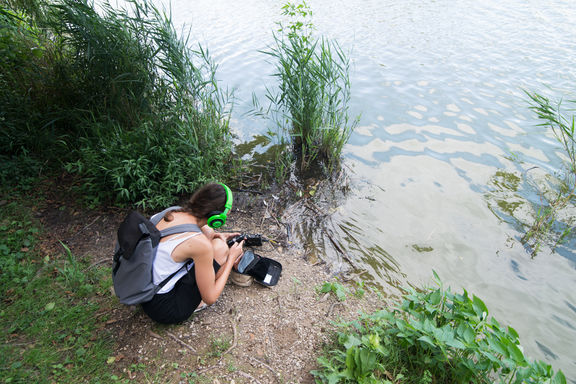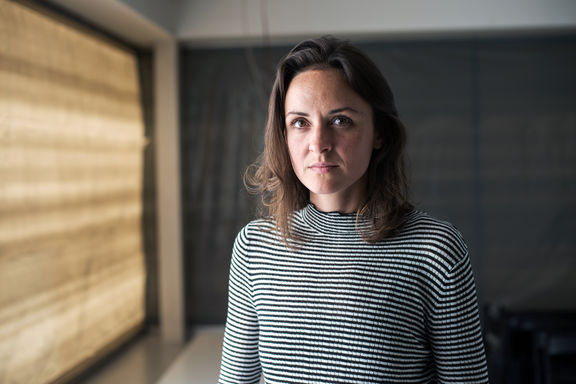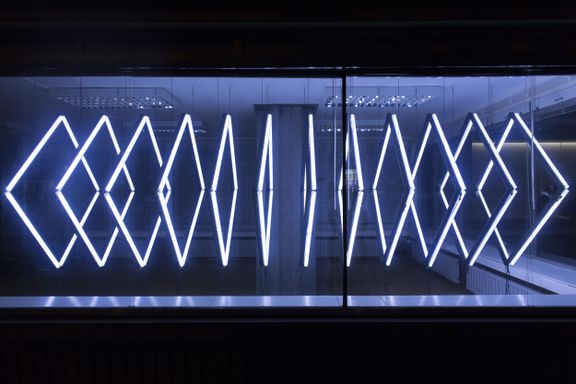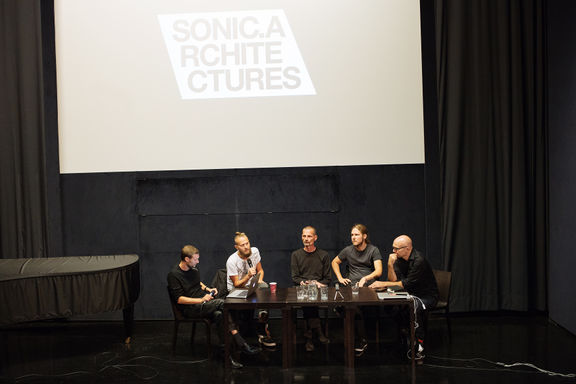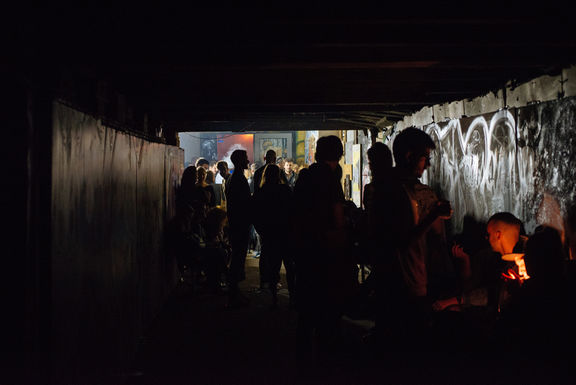MoTA Museum of Transitory Art
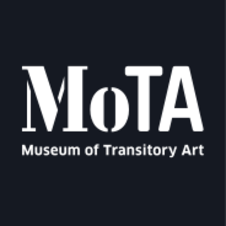
Past events
-
23 May 2024
Bosnia and HerzegovinaBihaćKRAK CentarSONICA FestivalKRAK Centar, Sonica International Festival of Transitory Art and MoTA Museum of Transitory Art present a performance by multi-instrumentalist Iztok Koren, an artist of the SHAPE+ platform. Co-founded by the European Union.
-
to
13 Apr 2023
15 Apr 2023
SpainOlotOrfeo Popular OlotiFestival SismògrafOpium Clippers, a performance by Neja Tomšič, coproduced by Glej Theatre and MoTA Museum of Transitory Art. Related to the Embassy of the Republic of Slovenia in Madrid
-
28 Nov 2019
United KingdomLondonIKLECTIK FestivalSONICA X IKLECTIK featuring a concert by Širom (Glitterbeat Records) and an exhibition by MoTA Museum of Transitory Art (Uršula Berlot, Nonument Group, supported by the Embassy of the Republic of Slovenia in London,
-
to
18 Oct 2018
21 Oct 2018
United KingdomLondonUN8 msdm galleryThe visual essay and performance Tea for 5 - Opium Clippers by Neja Tomšič (MoTA Museum of Transitory Art), ceramics by Anja Slapničar, supported by Glej Theatre,
-
13 Oct 2018
AustriaViennaBrutal BeautyThe visual essay and performance Tea for 5 - Opium Clippers by Neja Tomšič (MoTA Museum of Transitory Art), ceramics by Anja Slapničar, and the poetry reading by Gašper Torkar, supported by Glej Theatre,
-
to
6 Oct 2018
7 Oct 2018
ItalyTreviso/TrevižBThe visual essay and performance Tea for 5 - Opium Clippers by Neja Tomšič (MoTA Museum of Transitory Art), ceramics by Anja Slapničar, supported by Glej Theatre, in the frame of the exhibition Postcolonial Frames/Ex Oriente
-
to
13 Sep 2018
15 Sep 2018
CroatiaPulaKandler's Street, The Rise of St. RochVisualia Festival of LightColours in Motion, an interactive light and sound installation by Marko Batista (Strip Core), and Waves, an audiovisual installation by Martin Bricelj Baraga (MoTA Museum of Transitory Art),
-
to
24 Aug 2018
12 Sep 2018
KazakhstanAlmatyEsentai River areaMartin Bricelj Baraga (MoTA Museum of Transitory Art) and Simon Jacquemin (collective Bellastock) curate a series of interactive artworks on the banks of the Esentai River, featuring Vodoskop by BridA, an interactive bridge capturing and visualising live water data; Aryk-o-phone, a river instrument played by the river; and Lumitronome, a solar powered kinetic light installation, supported by the Embassy of the Republic of Slovenia in Moscow,
-
29 Jun 2018
South AfricaDurbanDurban Art GalleryThe presentation of the project NONUMENT 01:: McKeldin Fountain by Neja Tomšič and Martin Bricelj Baraga (MoTA Museum of Transitory Art) collaborating with Lisa Moren and Jaimes Mayhew, in the Other Realities section of the International Symposium on Electronic Art (ISEA)
-
19 May 2018
USABaltimoreMaryland Art Place, McKeldin SquareThe official launch of the NONUMENT 01:: McKeldin Fountain app by Neja Tomšič and Martin Bricelj Baraga (MoTA Museum of Transitory Art) collaborating with Baltimore artists, and the Nonument 01 exhibition
-
to
28 Oct 2017
29 Oct 2017
GermanyBerlinZK/U Zentrum für Kunst und UrbanistikModular Relations Conference and Sonica Berlin AV Showcase co-organised by the MoTA Museum of Transitory Art (Sonica International Festival of Transitory Art) within the Artecitya EU project
-
to
22 May 2017
23 May 2017
BulgariaSofiaPlastelin AtelierSofia Underground International Performance Art FestivalThe visual essay and performance Tea for 5 - Opium Clippers by Neja Tomšič (MoTA Museum of Transitory Art), ceramics by Anja Slapničar;
-
to
16 Mar 2017
18 Mar 2017
Bosnia and HerzegovinaSarajevoPreporod GallerySarajevo Winter FestivalThe visual essay and performance Tea for 5 - Opium Clippers by Neja Tomšič (MoTA Museum of Transitory Art), ceramics by Anja Slapničar; music appearance by Katja Šulc; Iva Tratnik, Adrijan Praznik, Ivana Bajec, Maks Bricelj, Tia Avsec at a group exhibition;
-
16 Dec 2016
ItalyPorto MargheraSpazio AereoSonica International Festival of Transitory Art presented its program, including also the NEUNUNDNEUNZIG installation by Martin Bricelj Baraga and Olaf Bender, produced by MoTA Museum of Transitory Art, and Random Logic
-
to
20 Apr 2016
24 Apr 2016
SwedenStockholmMoTA Museum of Transitory Art presents works by Arjan Pregl, Uršula Berlot, Adam Basanta, Jan Vormann, Nik Nowak, and Karina Smigla-Bobinski at Supermarket, Stockholm Independent Art Fair
-
to
27 Oct 2015
29 Oct 2015
FranceParisGalerie Fernand LégerBiennial Némo ParisNEUNUNDNEUNZIG (99), an installation also by Martin Bricelj Baraga (MoTA Museum of Transitory Art)
-
4 Oct 2015
USABaltimoreCurrent SpaceNonument01 programme by Neja Tomšič and Martin Bricelj Baraga (MoTA Museum of Transitory Art) collaborating with Baltimore artists, McKeldin Fountain workshop and parade at the Transmodern Festival, in public space and
-
to
24 Sep 2015
27 Sep 2015
USABaltimoreTheatre ProjectSonica International Festival of Transitory Art (MoTA Museum of Transitory Art) presents the Sound Investments exhibition with Irena Tomažin’s Faces of Voices and Spatial’s Dental Metal sound installation by Martin Bricelj Baraga; workshops and concerts with Miha Ciglar and Irena Tomažin at the High Zero Festival
-
2 May 2015
GermanyDresdenFestspielhaus HellerauRandom Logic (coorganised by MoTA Museum of Transitory Art) at the ICAS Festival and
-
to
30 Apr 2015
2 May 2015
GermanyDresdenFestplatz Pieschener Allee, Festspeilhaus Hellerau, Lab 15NEUNUNDNEUNZIG (99), an installation also by Martin Bricelj Baraga, and an audio-visual preformance by Random Logic and Oknai (MoTA Museum of Transitory Art, Sonica International Festival of Transitory Art) at the ICAS Festival
-
to
9 Nov 2013
16 Nov 2013
NetherlandsEindhovenThe project Dark Star 3.0 by Martin Bricelj Baraga (MoTA Museum of Transitory Art) as the winner of the festival Glow Next
-
to
16 Mar 2012
27 May 2012
United KingdomLiverpoolFACT GalleryRobovox project byMartin Bricelj Baraga, Slavko Glamočanin (MoTA Museum of Transitory Art) and Chris Sugrue (Spain-Slovenia, Ljudmila - Ljubljana Digital Media Lab) project, part of the Robots & Avatars EU funded project led by by KIBLA Multimedia Centre,
-
to
9 Feb 2012
12 Feb 2012
United KingdomLondonMoTA Museum of Transitory Art and Kinetica Museum, DarkStar preview at the Kinetica Art Fair 2012, Ambika P3, 35 Marylebone Road, London
- SHAPE – Sound, Heterogenos Art and Performance in Europe, 2017
Project summary - MAPS – Mapping and Archiving Public Spaces, 2017
Project summary - Advancing Light-driven Public Interactions, 2014
Project summary - Artecitya, 2014
Project summary - MeetFactory, 2014
Project summary - SHAPE - Platform for Innovative Music and Audiovisual Art from Europe, 2014
Project summary Show more
Venue
MoTA styles itself as a museum without a permanent collection or a fixed space, but as of 2013, it does run its own venue. First, there was the now-defunct MoTA Point, which housed a dense programme of concerts and exhibitions and was used as an occasional working space for resident artists and workshops. It closed in spring 2016, but a new location was established in the Šiška neighbourhood soon after, called the MoTA LAB.
Presentations of MoTA's bigger productions take place at the Kino Šiška Centre for Urban Culture.
Music, sound art and audio-visual productions
Since its inception, MoTA has been running a diverse programme of concerts, focusing on contemporary electronica and improvised music. As a part of the Sonica Series, the Spring Festival (2001–2012) and several of its more sporadic projects, it booked the likes of Fennesz, Senking, Blixa Bargeld, William Basinski, Teho Teardo, Keith Rowe, Plaid, Clark and many others. In a somewhat different vein the Sonica Classics series stages artists like the minimalist pioneer Charlemagne Palestine, the idiosyncratic lute player Jozef Van Wissem, and the cellist Hildur Guðnadóttir. For a time, MoTA also organised live cinema events (held primarily at Kinodvor Cinema) called CinemaScapes. Some of the featured artists were Olga Mink and Scanner, The Kilimanjaro Darkjazz Ensemble, Mira Calix and Byetone.
MoTA's largest activity is the annual Sonica International Festival of Transitory Art. Featuring AV and music performances, art installations and lectures, Sonica presents artists like Tim Hecker, Rashad Becker, Emptyset, Marina Rosenfeld, Herman Kolgen, Ryoichi Kurokawa and Random Logic. The festival traditionally utilises different Ljubljana venues such as MoTA LAB, Slovenian Cinematheque, Tovarna Rog, Križevniška Church and Klub K4.
Installations and other contemporary art projects
MoTa boasts an extremely varied programme of art projects that frequently, in one way or another, feature sound among their primary components. Some of the featured artists are Nonotak, Oliver Ratsi - ANTI VJ, Karina Smigla Bobinski, Nik Nowak, Jan Vormann, Les Liens Invisibles, Bram Vreven, Svetlana Maraš, the Greta Rusttt arts collective, Lenka Đorojević and Matej Stupica (who presented the OHO-awarded installation Nevromat) and Irena Tomažin (with her audiovisual installation Faces of voices / noise, inspired by the question "What would a portrait of a certain voice look like?"). Many of them were invited to hold lectures, set up workshops and cooperate in the Artist's Talk discussions.
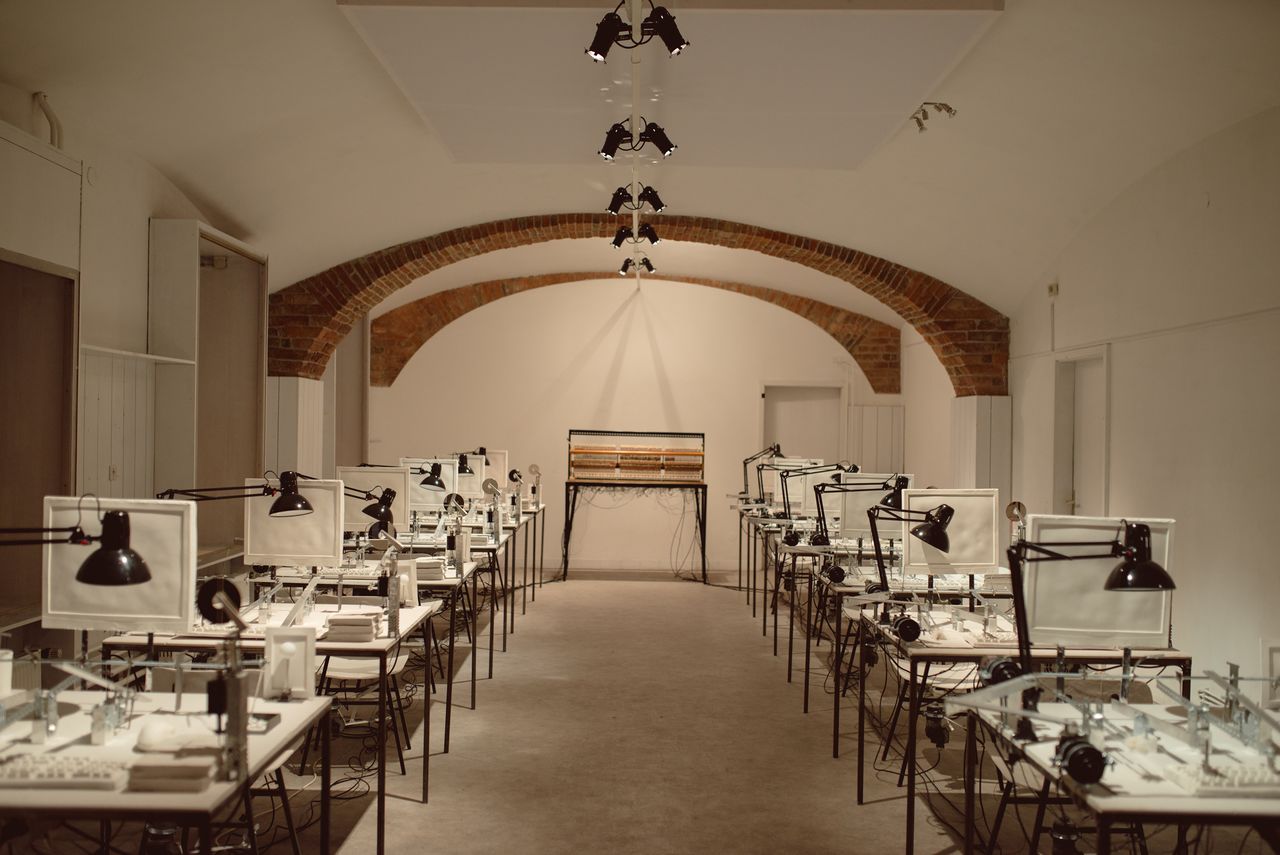
Martin Bricelj Baraga art
Martin Bricelj Baraga, the director of MoTA Museum, is a highly prolific author himself. His works are often large-scale installations set in public spaces and unusual architectural contexts.
Among his works are The Cyanometer, a monolith that gathers data of the blueness of the sky and the quality of air and visualises them; the Moonolith, an interactive monument that reflects the Moon and star constellations on its surface; the Darkstar, a large interactive piece on which more than 30 artists, programmers, architects and musicians collaborated; and RoboVox, an 8m-high robot set on a public square, to whom one could send telephone messages which he would then read aloud.
Bricelj Baraga collaborated with the renowned musician Olaf Bender (aka Bytone, DE) on a kinetic sound sculpture consisting of a matrix of 99 black balloons and called Neunundneunzig (99). He also collaborates with MoTA's producer Neja Tomšič on Nonuments, a long term project of research and artistic production that deals with monuments, landmarks and other symbolically-laden public spaces. In addressing this topic, Tomšič was awarded a fellowship at the University of Maryland Baltimore County, with which they realised the Nonument 01: McKeldin Fountain project in collaboration with Lisa Moren and Jaimes Mayhew at the Transmodern Festival in Baltimore.
Bricelj Baraga has presented his works at Némo (FR), Kinetica Art Fair (UK), TodaysArt (NL), Glow Next (where Baraga got awarded the first prize in 2013), ICA (UK), Galerie Fernand Leger (FR), Sonar (ES), Columbia University (US), Fact (UK), Centro Cultural Recoleta (AR), Kunsthaus (AT), Kaapelithas (FI), etc. His works have been written about in such media outlets as Wired, Architecture Daily, Design Boom, boingboing.net, Pecha Kucha, New York Art Magazine and Harper Collins.
MoTA artist agency
MoTA has a longer history of representing artists abroad, starting with the director Martin Bricelj Baraga himself. Other artists collaborating with MoTA include Irena Tomažin, Miha Ciglar, and Neja Tomšič; they have been featured in the High Zero and Transmodern festivals (US) and hosted by the Current Gallery in Baltimore.
The year 2015 marked MoTA's semi-official entry into the art world as an agency, primarily with the aim of promoting the SHAPE platform artists (see below). The agency's profile is accordingly broad and features audiovisual works by the Serbian duo WoO and Incredible Bob, large public scale installations by Bricelj Baraga and Nik Nowak, the London-based club act Spatial, and a selection of sound-based gallery works – Faces of Voices.Noise by the vocalist Irena Tomažin.
The SONICA x Series regularly stages events abroad to promote Slovenian and SHAPE artists on international stages. So far, SONICA x Series has taken place in London, Trieste, Venice, Wroclaw, Maribor and Baltimore.
Impermanent Museum collection
Over the years, MoTA has established its so-called Impermanent Museum collection Arte/Facts. Featuring a selection of works by artists that they've worked with since 2007, these are not really works as such rather than parts or residues of the artistic process. Some of the artists included are Jan Vormann, Karina Smigla-Bobinski, Adam Basanta, Zimoun, Nik Nowak and Stephen Cornford. MoTA presents this collection at art fairs, among them, the Supermarket Art Fair in Stockholm in 2015.
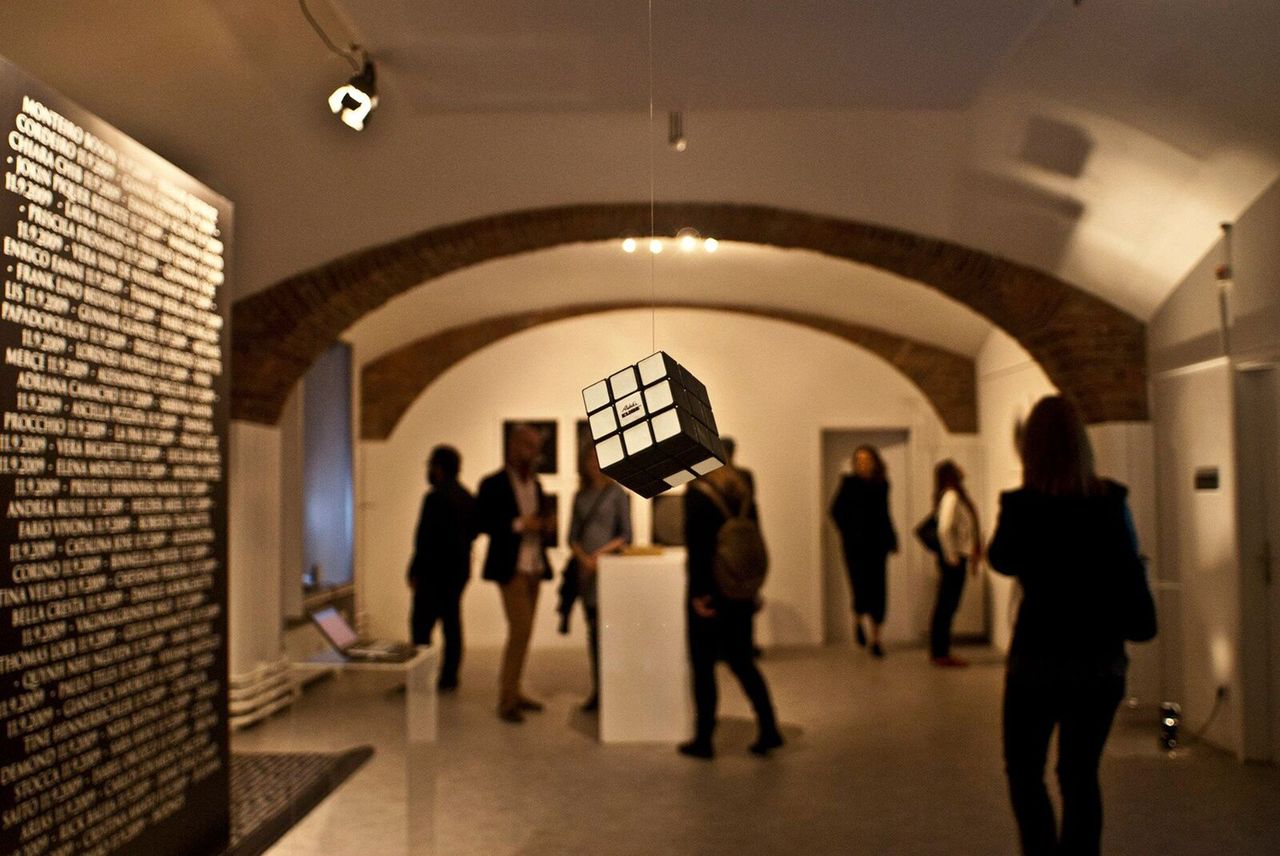
International partnerships
MoTA is (or has been) involved in various international networks and partnerships. Among them, T.R.I.B.E. – Transitory Research Initiative of the Balkans and Eastern Europe, which started as a residency network in 2012 and connected Ljubljana, Prague, Istanbul and Nicosia. It hosted more than 15 artists and researchers, organised two symposia and resulted in the publication Exercises in Transitory Art.
Another network in which MoTA is involved is Artecitya, which brings together artists, architects, town planners and citizens for, as they say, the aim of improving the quality of life in cities through technological and artistic innovations. Within Artecitya, MoTA is developing the Arcade Gallery, a sound gallery located in the centre of Ljubljana, which commissions sound compositions, especially for this location.
MoTA was also part of the ALIPI: Advancing Light-driven Public Interactions project, of the ICAS – International Cities of Advanced Sound network, of the GALA Green Art Lab Alliance project, the Swiss Music Day 2015, and numerous others. In 2017, it started with the MAPS – Mapping and Archiving Public Spaces, aiming to identify, map and archive public spaces that may be a part of our cultural heritage – yet identified as such.
Transitory network and the artist-in-residence programme
Since 2008, MoTA has been running an artist-in-residence programme in Ljubljana for media, sound or visual artists, curators and researchers. So far, MoTA has hosted and produced the work of more than 15 artists, among them Jorge Rodriguez Gerada, Felix Thorn, Julien Bayle, Lexa Walsh, Alex Toland, Gabey Tjon a Tham, Marina Rosenfeld, and Ohira + Bonilha. Some of these residencies have taken place in collaboration with Ljudmila - Ljubljana Digital Media Lab, for example, Nedine Kachornamsong and Yuri Landman. In 2010, MoTA established the Transitory Network of residencies in Eastern Europe.
The SHAPE platform
The SHAPE project is a 3-year initiative that (re)unites 16 European non-profit organisations active within the ICAS – International Cities of Advanced Sound network to create a platform that aims to support, promote and exchange emergent musicians and interdisciplinary artists with an interest in sound. SHAPE stands for "Sound, Heterogeneous Art and Performance in Europe".
Forty-eight musicians and artists are chosen annually to participate in a mix of live performances, residencies, workshops and talks across member festivals and special events. Under the auspices of SHAPE, MoTA presented Slovenian SHAPE artists within the SONICA x Series in partnership with the Apiary Studios in London and Spazio Aereo in Venice.
The Artist's Talk project
In 2010, MoTA launched the project Artist's Talk, an online portal for publishing, disseminating and archiving high-quality video recordings of interviews and lectures given by artists, curators, theorists and others working in the fields of art, activism and theory.
Still an on-going series of live events, this initiative is a product of three contemporary art and new media centres from Eastern and Central Europe (MoTA Ljubljana, CIANT Prague and WRO Wrocław). It is based on the idea of the free distribution of ideas and knowledge. A partial result of the interviews conducted as a part of Artist's Talk is the book Outerviews, first presented at the 15th WRO Media Art Biennale in Wrocław.
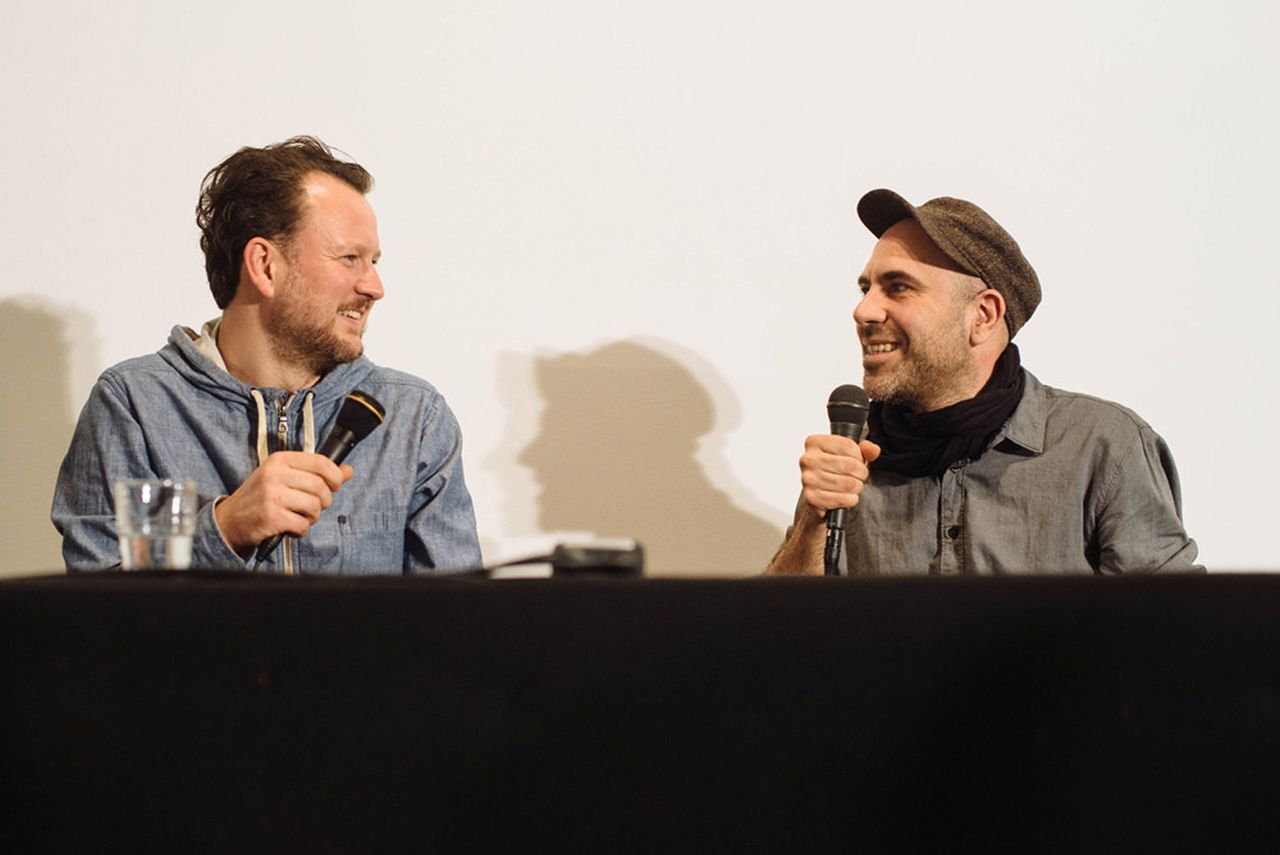
Tomaž Brate Reading room and Mediatheque
In 2009, MoTA and the Museum and Galleries of Ljubljana opened a reading room and mediatheque in the Jakopič Gallery, which consists of a vast collection of books belonging to Tomaž Brate (1963–2008) as well as the MoTA book collection. The reading room serves also as the MoTA info point with information on resident artists, current, past and future projects, and archives.
See also
External links
- MoTA – Museum of Transitory Art website
- Artist Talk website
- Martin Bricelj Baraga's website
- Cyanometer project website
- An article on one of Bricelj's projects (in Slovene) Delo Newspaper
- Moonolith on Youtube
- Cyanometer on Youtube
International partnerships and networks websites
Various MoTA art (co)productions
- CLIMAX, an episodic live cinema research-project website
- The Nonument Group on Facebook
- A presentation of Nonument Group
- The artist Lexa Walsh's MoTA residency project website
- Artist Talk YouTube Playlist
Gallery
- New media art
- New media art producers
- New media art studios
- Producers
- Event organisers
- Festival organisers
- Residencies
- Venues
- New media art venues
- EU funding of Slovene organisations (Culture and MEDIA Programmes)
- EU Creative Europe, Culture funding recipient
- Education and research
- Music festival and event organisers
- New media art education and research
- New media art festival and event organisers
- New media art course and workshop organisers
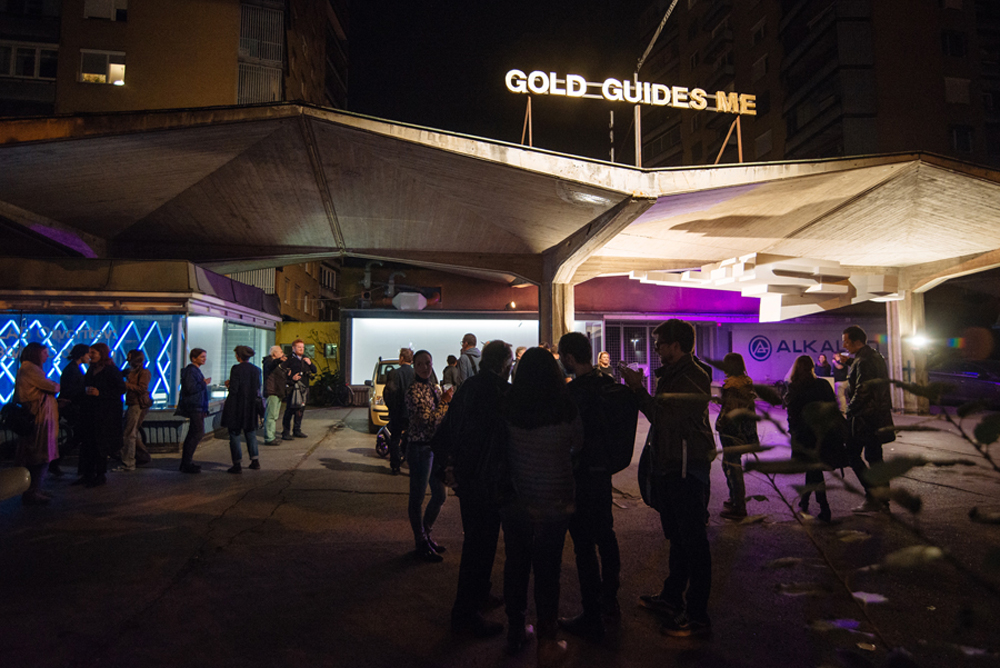
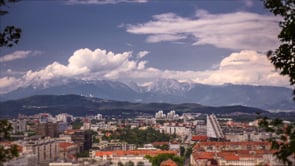
![Nevromat [Neur-O-Matic], Lenka Đorojević & Matej Stupica, produced by Ljudmila Art and Science Laboratory and Projekt Atol Institute, 2014. An OHO Group Award winner.](/images/thumb/9/99/Ljudmila_Art_and_Science_Laboratory_2014_Dorojevic_Stupica_Neur-O-Matic_Photo_Miha_Peterlic_%283%29.jpg/576px-Ljudmila_Art_and_Science_Laboratory_2014_Dorojevic_Stupica_Neur-O-Matic_Photo_Miha_Peterlic_%283%29.jpg)
![Nevromat [Neur-O-Matic], an installation by Lenka Đorojević & Matej Stupica that got the OHO Group Award in 2015](/images/thumb/b/b7/Ljudmila_Art_and_Science_Laboratory_2014_Dorojevic_Stupica_Neur-O-Matic_Photo_Miha_Peterlic_%282%29.jpg/576px-Ljudmila_Art_and_Science_Laboratory_2014_Dorojevic_Stupica_Neur-O-Matic_Photo_Miha_Peterlic_%282%29.jpg)
![Nevromat [Neur-O-Matic] by Lenka Đorojević & Matej Stupica, produced by Ljudmila Art and Science Laboratory and Projekt Atol Institute, 2014](/images/thumb/0/06/Ljudmila_Art_and_Science_Laboratory_2014_Dorojevic_Stupica_Neur-O-Matic_Photo_Miha_Peterlic.jpg/576px-Ljudmila_Art_and_Science_Laboratory_2014_Dorojevic_Stupica_Neur-O-Matic_Photo_Miha_Peterlic.jpg)
